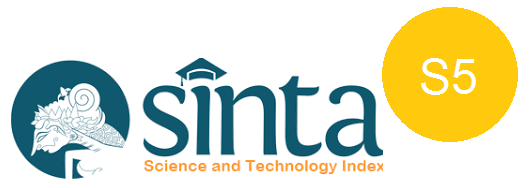INPUT AND OUTPUT TO IMPROVE ENGLISH SPEAKING SKILLS BASED ON YOUTUBE VIDEO LESSONS
DOI:
https://doi.org/10.47313/pujangga.v7i2.1468Abstract
ABSTRACT
The present study attempts to explore kinds of input and output to improve English speaking skills based on YouTube video lessons. The theory of input was proposed by Krashen, while the output was taken from the output hypothesis of Swain. This study employed qualitative descriptive method, which is a method of research that attempt to describe and interpret the objects in accordance with reality The main instrument was collecting the data, observing the data by watching the whole ten videos, then classifying every tips to two general main paths: input and output. The study showed variety of input which are found on the ten YouTube video lessons are listening that can be achieved by observing in form of listening podcast and listening music in English and learn the lyrics, and varies of reading which are reading Speed reading, Reading aloud to practice pronunciation, Reading a book, blog post, news, Reading children’s book. Kinds of output gained from those videos are speaking which are Talk to yourself, Have a speaking partner, Talk with a native, Using imitation technique, Join a discussion, Speak loudly, Make video, Creative practice, Spend time with people who speak English, and writing which is described more specifically on that video as writing a daily journal.
References
Ahmadi, F. B., & Panahandeh, E. (2016). The Role of Input-based and Output-based Language Teaching in Learning English Phrasal Verbs by Upper-intermediate Iranian EFL Learners. Journal of Education and Learning (EduLearn), 10(1), 22–33. https://doi.org/10.11591/edulearn.v10i1.2860
H.Douglas Brown. (2000). [H._Douglas_Brown]_Teaching_by_Principles,_Second_(BookFi.org).pdf. In Teaching by Principles An Interactive Approach to Language Pedagogy (p. 491).
Habibah, F. A. F. (2018). The Effects of Teaching Media and Grammar Mastery Towards Students ’ Speaking Skill At State Junior High Schools in Tangerang Banten. Pujangga, 4, 15–30.
Namaziandost, E., Dehkordi, E. S., & Shafiee, S. (2019). Comparing the effectiveness of input-based and output-based activities on productive knowledge of vocabulary among pre-intermediate EFL learners. Asian-Pacific Journal of Second and Foreign Language Education, 4(1). https://doi.org/10.1186/s40862-019-0065-7
Schutz, R. E. (1998). Stephen Krashen ’ s Theory of Second Language Acquisition Description of Krashen ’ s Theory of Second Language. Stephen Krashen’s Theory of Second Language Acquisition, 1–7. https://www.sk.com.br/sk-krash-english.html
Swain, M. (1995). Three functions of output in second language acquisition. In Principles and Practice in Second Language Acquisition (pp. 125–144).
Syafiq, A. N., Rahmawati, A., Anwari, A., & Oktaviana, T. (2021). Increasing Speaking Skill through YouTube Video as English Learning Material during Online Learning in Pandemic Covid-19. Elsya : Journal of English Language Studies, 3(1), 50–55. https://doi.org/10.31849/elsya.v3i1.6206
Yinger, R. J. (1987). Learning the Language of Practice. Curriculum Inquiry, 17(3), 293–318. https://doi.org/10.1080/03626784.1987.11075294
Zhang, S. (2009). The Role of Input, Interaction and Output in the Development of Oral Fluency. English Language Teaching, 2(4), 91–100. https://doi.org/10.5539/elt.v2n4p91
Zoubi, S. M. (2018). The Impact of Exposure to English Language on Language Acquisition. Journal of Applied Linguistics and Language Research, 5(4), 151–162. www.jallr.com









